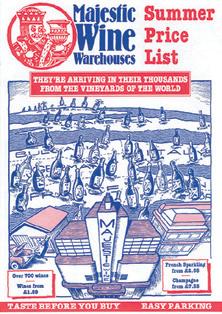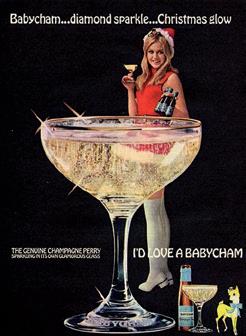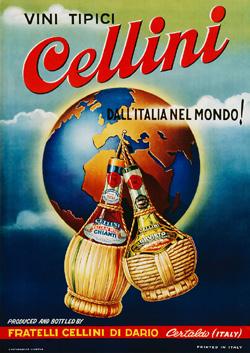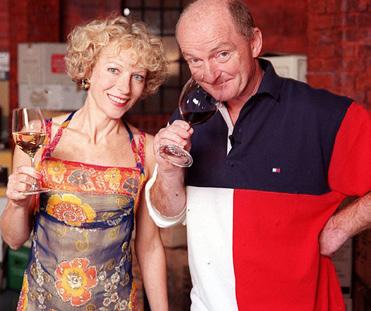
6 minute read
How Britain learned to love wine
By Huw Pryce
We Brits long turned our noses up at wine, preferring a pint to a glass of pinot. Well, that was until some major brands, supermarkets and influencers got in on the act
Advertisement
The PR world has always been quick to embrace the new, the different and the unusual. And what could be more unusual than the combination of “English” and “wine”? It even sounds like a bit of an oxymoron, given our famously rainy climate and the enormous potential for mouldy grapes.
But English wines – and organic ones to boot – have been enjoying a huge surge in popularity in recent years. After all, with good farming practices, British vineyards can now produce high-quality, sustainable wines, the kind of stuff that wins prestigious awards. As Nick Mason from organic wine specialist Bancroft Wines puts it: “You’re amazing if you’re growing organic grapes anywhere in the world. You’re incredible if you’re doing it in England.”
The rise of English wine comes on the back of some particularly clever comms in recent years, flagging up the virtues and overall quality of some of England’s finest vegan, organic and locally sourced wines, catering to a new, eco-savvy market. Thanks to the backlash against pesticides and a growing understanding among consumers of the perils of cheap, mass-produced wine, Britain’s organic producers are enjoying their moment in the sun, with UK sales up by 8% since 2018 and natural wines featuring heavily on wine lists at the likes of Raymond Blanc’s two-Michelin-starred Le Manoir restaurant in Oxfordshire.
And right now there’s another, more pressing reason for the surge in wine sales across the board. With pubs, bars, restaurants and theatres closed amid the global coronavirus pandemic, wine is flying off the supermarket and off-licence shelves. Some wine merchants that are able to deliver door-to-door are reporting sales up by an astonishing 1,000%.
So how did we Brits learn to love wine? And how has the all-important messaging changed?
LOVE AT FIRST SIP?
Looking at a modern British supermarket, you’d be forgiven for thinking that the sizeable wine aisle has always been there. These days, wine outdoes shampoo and conditioner for sheer variety, and that’s before you even start to consider countries of origin. But that wasn’t always the case. In the dark days of the 1950s, the British public drank almost exclusively beer, cider, sherry and spirits. Expensive imported wine was the preserve of the privileged few.

CLEVER MARKETING PAVED THE WAY FOR THE LIKES OF BABYCHAM, BUT BRITISH DRINKERS CAN NOW SAMPLE HOME-GROWN WINES SUCH AS THOSE FROM THE RIDGEVIEW ESTATE
For the rest of us, there was “British wine” – a sweetened, adulterated drink made from grape juice. Its remnants can now be found in the backwaters of supermarket shelves, rebranded as health drinks or languishing as legacy brands. But as the middle classes grew in the second half of the 20th century, the potential market for wine grew too. It was a market the supermarkets would eventually wrest from the off-licences, with the help of some clever marketing.

CLEVER MARKETING PAVED THE WAY FOR THE LIKES OF BABYCHAM, BUT BRITISH DRINKERS CAN NOW SAMPLE HOME-GROWN WINES SUCH AS THOSE FROM THE RIDGEVIEW ESTATE
One key early brand was Babycham. Intended as a means of stimulating demand for perry (pear cider), Babycham was marketed as a small-measure drink for women. It was given a cute label and attractive bottles, and it was meant to be consumed from branded goblets. Its popularity – building on Queen Victoria’s love of German white wine, which she called “hock” – created an opening for Liebfraumilch, giving rise to brands such as Black Tower and Blue Nun, both of which were marketed in non-standard bottles. The sweet, light taste and low acidity were easy on the “uneducated” British palate.

CLEVER MARKETING PAVED THE WAY FOR THE LIKES OF BABYCHAM, BUT BRITISH DRINKERS CAN NOW SAMPLE HOME-GROWN WINES SUCH AS THOSE FROM THE RIDGEVIEW ESTATE
RIESLINGS TO BE CHEERFUL
Other European producers soon started to make their presence felt, partly as a result of the expansion of tourism into Europe in the 1960s and the influence of the Common Market in the ’70s. Mateus Rosé, a simple blended wine, and Il Ruffino Chianti sought to identify themselves through novelty packaging; the Chianti, for example, came wrapped in a half jacket of papyrus, which would be soaked in water to cool the wine.
French wine finally broke into the UK market when importers started trialling soft, sweet whites and rosés. Tasting panels revealed that the British public’s preferred flavour – for both red and white – was a safe, fruity and lowacidity “medium”. The resulting blended wine, Le Piat d’Or, was the final key to unlocking the UK. The red and white tasted remarkably similar, but they gave an impression of sophistication that satisfied the British dinner-party market.

CLEVER MARKETING PAVED THE WAY FOR THE LIKES OF BABYCHAM, BUT BRITISH DRINKERS CAN NOW SAMPLE HOME-GROWN WINES SUCH AS THOSE FROM THE RIDGEVIEW ESTATE
Of course, if you’re a modern, British wine-drinker, Le Piat d’Or is loathsome, lacking character, complexity, aftertaste… all the things French wine is notable for. It was marketed as quintessentially French and a way to win the approval of cultured guests: “Les Français adorent Le Piat d’Or”. Untrue, of course, but after a few years the market was ready for more variety.
UNDER THE INFLUENCE
Early influencers such as Elizabeth David and Robert Carrier, not to mention Fanny Craddock, stimulated a growing trend for dinner parties – and wine was part of the experience. The Galloping Gourmet, Graham Kerr, made a point of drinking wine on camera, using the catchphrase “a short slurp” as he prepared a meal.
One of the first Brits to write seriously about wine for the mass market was Pamela Vandyke Price. A fixture of the 1960s media industry, she edited Wine and Food magazine for Condé Nast and was a wine correspondent for The Times. She paved the way for others too, notably the BBC’s Food & Drink programme, which would later feature the likes of Jilly Goolden and Oz Clarke.

JILLY GOOLDEN AND OZ CLARKE WERE THE FAMILIAR FACES OF WINE IN THE ’80S AND ’90S
Ultimately, though, it was the supermarkets that drove the biggest shift. “British supermarkets were wellplaced to build on these influencers and changes in British lifestyle, making the world of wine more approachable for the British public,” says marketing and research expert Denis Robb of The Research Practice. “Influencers and supermarkets helped to bring about a wine-drinking boom in the UK, based largely on changes in lifestyle and in the way people perceived themselves.” The rest, as they say, was history.
How English wine got its fizz back
The English wine industry started to make a comeback as part of the self-sufficiency movement of the 1960s and ’70s. Between 1914 and 1936, there had been no commercial vineyards operating in the UK, and it fell to these plucky pioneers to restart the industry from scratch by planting their own vines. Initially favouring cold-weather and German hybrid varieties that produced Germanic-tasting wines, they soon realised that commercial success was still a long way off.
Restricted by the climate, a lack of infrastructure and a hostile tax environment, the new vintners of Britain had to branch out into doing their own PR too. But even turning up at a village fête with trestle tables and homemade leaflets was fraught with legal difficulties. And the economies of scale that allowed established wine producers and importers to overcome the hostile British marketplace were simply not available to the embryonic domestic industry.

THE HAMBLEDON VINEYARD NEAR PORTSMOUTH IS ONE OF THE OLDEST IN THE UK
A turning point came in the late ’80s when producers like Denbies, near Dorking, began to replace their stock of hybrids with traditional French grapes. The Home Counties share the same climate and soil as the Champagne region, enabling production to shift from table wine to sparkling. Other vineyards soon followed suit. The UK now produces high-quality sparkling wines to rival Champagne. In 2017, the industry consolidated its PR arm when English Wine Producers and the UK Vineyards Association voted to merge, becoming UK Wine Producers Ltd (UKWP).










